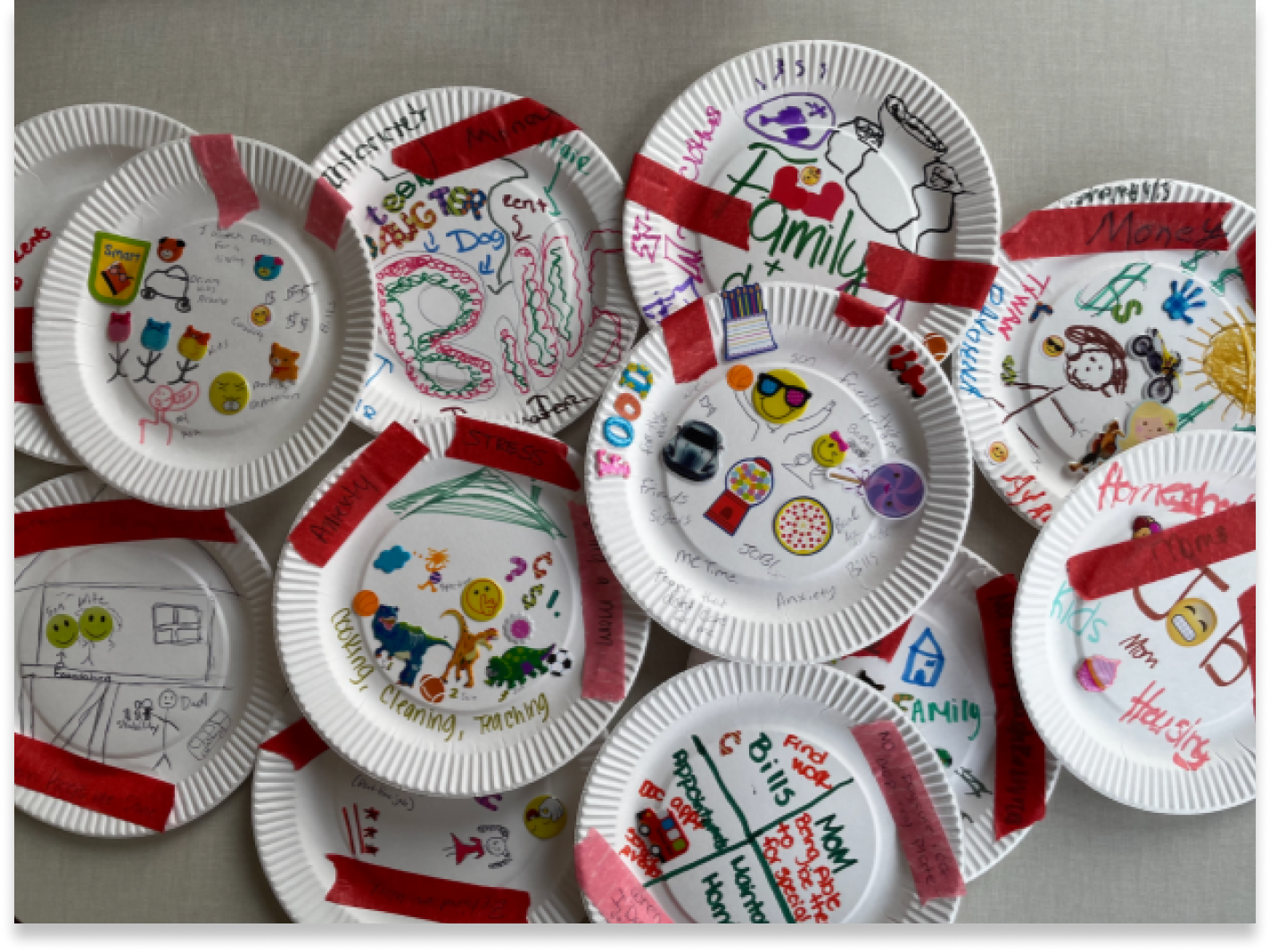build relationships
To design good services, I…
Co-design | empathy | user research | participatory design
The lesson: If you want to know your users, invest in meeting them as whole people. That means bringing your whole self to the work.
Work product: run of show for co-design session
This activity was one that I created and facilitated, but I worked alongside others to put together the full session’s agenda and host.
The backstory: In 2022 I co-hosted a design session with DC parents—mostly mothers—experiencing housing instability. The District was launching a pilot that would provide families with five years of rental assistance, career coaching, and cash payments to cover the loss of government assistance as participants earned more through employment.
A dozen or so parents joined us to help shape elements of the program’s design. At event registration, I asked if anyone needed a space to nurse or pump. I told parents to bring little ones if they didn’t have childcare. I brought toys, crayons, and Cheerios. I set up the space so people felt encouraged to bring their whole selves.
Day of, I gave everyone paper plates, markers, and stickers to draw all the things they were responsible for–the things “on their plate.” They then used red tape to label what caused them to “drop their plates.” We wanted to know what support services the pilot should invest in, but rather than ask, “what’s challenging in your life” or “what do you need,” the activity gave parents the space to share without having to ask for help. And for those less likely to speak up, we got a visual portrayal of their reality without having to verbally share.
Before I asked parents to share their plates, I shared my own. I was fresh off maternity leave, tired, and struggling to balance it all. My plate was honest about that. And we got honesty in return. Parents showed us that bills, kids, and household responsibilities were the central elements of their plates. Physical illness, mental stressors, and relationship challenges were the main reasons plates dropped. This told our team where to focus. It gave them a sense of where participants might struggle during the pilot and to plan for them.
